
Chickens, like any living creatures, can face various health challenges, including respiratory issues. These problems can arise from infectious agents, environmental factors, or underlying health conditions. Understanding the common respiratory problems in chickens, their symptoms, causes, and potential treatments is crucial for poultry farmers and enthusiasts to ensure the well-being of their flocks.
Infectious Coryza:
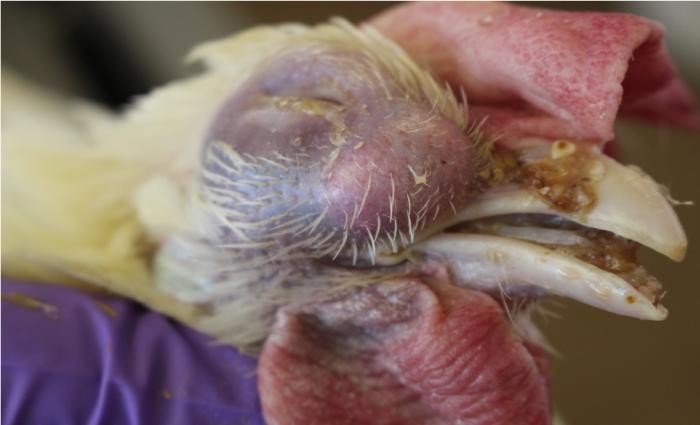
Infectious Coryza is a highly contagious respiratory disease that affects chickens, particularly older birds. It is caused by the bacterium Avibacterium paragallinarum and is characterized by inflammation of the upper respiratory tract. Here’s a more detailed look at Infectious Coryza, including its symptoms, causes, and potential treatments:
- Symptoms:
- Swelling around the face and eyes (edema), giving a “puffy” appearance.
- Nasal discharge, often thick and purulent (yellowish or greenish).
- Sneezing and coughing.
- Decreased appetite and reluctance to eat or drink.
- Decreased egg production and poor quality of eggs.
- Lethargy and general weakness.
- Causes:
- Avibacterium paragallinarum bacteria are responsible for Infectious Coryza.
- Transmission occurs through direct contact with infected birds, airborne droplets from coughing and sneezing, or contact with contaminated surfaces or equipment.
- Stress factors such as overcrowding, poor ventilation, and nutritional deficiencies can increase susceptibility to the disease.
- Diagnosis:
- Clinical signs and history of exposure to infected birds or premises are important for suspicion of Infectious Coryza.
- Laboratory tests, including bacterial culture and PCR (polymerase chain reaction), can confirm the presence of Avibacterium paragallinarum.
- Treatment:
- Antibiotics: Treatment with antibiotics is essential to control the bacterial infection. Commonly used antibiotics include tetracycline, sulfonamides, and fluoroquinolones. These medications should be administered as per veterinary guidance and the recommended dosage regimen.
- Supportive care: Provide supportive care to infected birds, including proper nutrition, hydration, and a stress-free environment. Ensure access to clean water and high-quality feed to support recovery.
- Isolation: Infected birds should be isolated from the rest of the flock to prevent further spread of the disease. Implement strict biosecurity measures to minimize transmission risks.
- Vaccination: Some regions may have vaccines available for Infectious Coryza. Consult with a poultry veterinarian to determine the suitability and efficacy of vaccination for your flock.
Avian Influenza:

Avian Influenza, also known as bird flu, is a highly contagious viral respiratory disease that primarily affects birds, including chickens. Several strains of avian influenza viruses exist, with some having the potential to infect humans. Understanding Avian Influenza, its symptoms, causes, and potential treatments, is crucial for poultry farmers and public health officials. Here’s a comprehensive overview:
- Symptoms:
- Sudden death, especially in large numbers of birds.
- Respiratory signs such as coughing, sneezing, and nasal discharge.
- Swollen head, comb, and wattles.
- Purple discoloration of the wattles, combs, and legs.
- Decreased egg production and poor egg quality.
- Lethargy, weakness, and decreased appetite.
- Neurological signs such as twisting of the neck, paralysis, and tremors (in severe cases).
- Causes:
- Avian Influenza viruses belong to the Influenza A virus family, primarily subtypes H5 and H7.
- The virus can spread through direct contact with infected birds, respiratory secretions, feces, contaminated feed or water, and contaminated surfaces.
- Wild birds, particularly waterfowl, are natural reservoirs of avian influenza viruses and can transmit the virus to domestic poultry.
- Diagnosis:
- Clinical signs and history of exposure to infected birds or areas with avian influenza outbreaks are important for suspicion of the disease.
- Laboratory tests, including virus isolation, PCR (polymerase chain reaction), and serological testing, are used to confirm Avian Influenza infection.
- Treatment and Control:
- There is no specific treatment for Avian Influenza in birds.
- Infected birds are typically culled to prevent the spread of the virus to other birds and reduce the risk of human exposure.
- Strict biosecurity measures should be implemented to prevent contact between domestic poultry and wild birds, as well as to prevent transmission between poultry farms.
- Vaccination may be used as part of control measures, but effectiveness can vary depending on the virus strain and vaccination protocols.
It’s important to note that some strains of Avian Influenza, particularly H5N1 and H7N9, can pose a risk to human health. Proper handling of infected birds, use of personal protective equipment, and adherence to health guidelines are essential when dealing with Avian Influenza outbreaks to minimize human exposure and prevent potential pandemics. Collaboration between veterinary authorities, public health agencies, and poultry industry stakeholders is key to effectively managing Avian Influenza and reducing its impact on both animal and human populations.
Infectious Bronchitis:
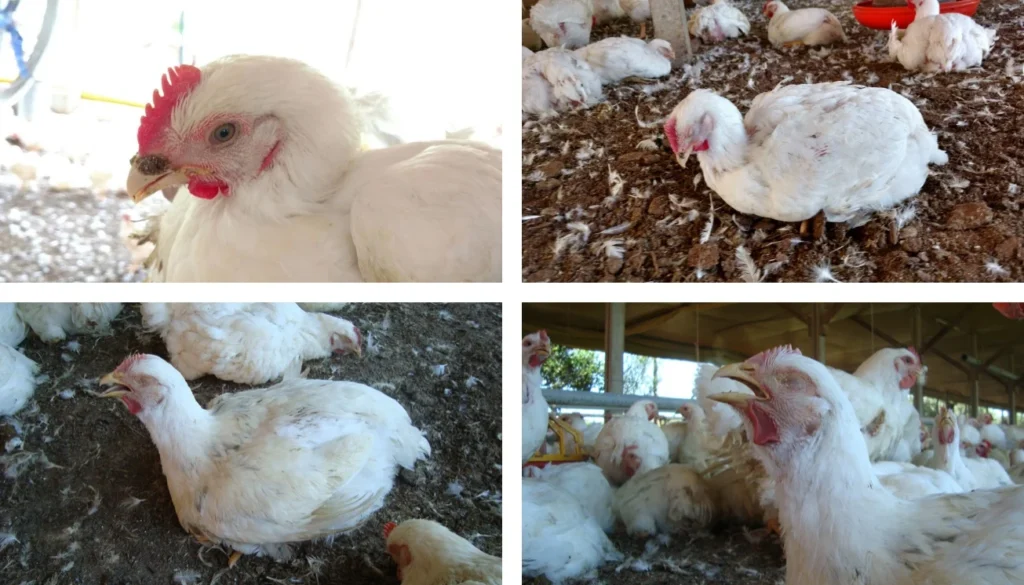
Infectious Bronchitis (IB) is a highly contagious viral respiratory disease that primarily affects chickens, although it can also impact other poultry species such as turkeys. It is caused by the Infectious Bronchitis Virus (IBV), which belongs to the Coronavirus family. Infectious Bronchitis can lead to significant economic losses in the poultry industry due to decreased egg production, poor egg quality, and increased susceptibility to secondary infections. Here’s a detailed overview of Infectious Bronchitis, including its symptoms, causes, and potential treatments:
- Symptoms:
- Coughing and sneezing, often accompanied by nasal discharge.
- Watery eyes and conjunctivitis (inflammation of the eye membranes).
- Respiratory distress, including gasping and rattling sounds during breathing.
- Reduced feed and water intake, leading to weight loss and poor growth in chicks.
- Decreased egg production, with eggs often exhibiting abnormalities such as thin shells, wrinkled shells, or double yolks.
- Generalized weakness, lethargy, and decreased activity.
- Causes:
- The Infectious Bronchitis Virus (IBV) is the primary cause of Infectious Bronchitis in chickens.
- IBV is highly contagious and spreads rapidly within poultry flocks through respiratory secretions, aerosols, and contact with contaminated surfaces or equipment.
- The virus can survive in the environment for a limited period, contributing to ongoing transmission.
- Diagnosis:
- Clinical signs and history of exposure to infected birds or premises with Infectious Bronchitis outbreaks are important for diagnosis.
- Laboratory tests, including virus isolation, PCR (polymerase chain reaction), and serological testing, are used to confirm IBV infection and differentiate it from other respiratory diseases.
- Treatment and Control:
- There is no specific antiviral treatment for Infectious Bronchitis.
- Supportive care is essential, including providing a stress-free environment, proper nutrition, access to clean water, and maintaining optimal housing conditions.
- Management of secondary bacterial infections with antibiotics may be necessary to prevent complications.
- Vaccination: Vaccines are available for controlling Infectious Bronchitis. Different strains of IBV exist, so choosing the appropriate vaccine based on the prevalent strains in the region is crucial. Vaccination protocols should be followed as per manufacturer recommendations and veterinary guidance.
Mycoplasma Gallisepticum (MG):
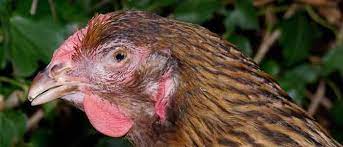
Mycoplasma gallisepticum (MG) is a bacterial infection that commonly affects chickens, turkeys, and other poultry species. It primarily targets the respiratory system, leading to respiratory distress and other associated symptoms. MG is a significant concern for poultry producers due to its impact on bird health, reduced egg production, and economic losses. Here’s a comprehensive overview of Mycoplasma gallisepticum, including its symptoms, causes, and potential treatments:
- Symptoms:
- Respiratory distress, including coughing, sneezing, and difficulty breathing.
- Nasal discharge and discharge from the eyes (conjunctivitis), often leading to swollen sinuses.
- Rales or rattling sounds during breathing.
- Reduced feed and water intake, resulting in weight loss and poor growth.
- Decreased egg production, with eggs potentially showing abnormalities such as thin shells, soft shells, or shell-less eggs.
- Lethargy, weakness, and decreased activity.
- Causes:
- Mycoplasma gallisepticum (MG) is a bacterium belonging to the Mycoplasma genus.
- MG is highly contagious and spreads through direct contact with infected birds, contaminated equipment, and airborne droplets from coughing and sneezing.
- Stress factors such as overcrowding, poor ventilation, and nutritional deficiencies can increase susceptibility to MG infection.
- Diagnosis:
- Clinical signs and history of exposure to MG-infected birds or premises are key factors for suspicion of MG infection.
- Laboratory tests, including bacterial culture, PCR (polymerase chain reaction), and serological testing, are used to confirm Mycoplasma gallisepticum infection.
- Treatment and Control:
- Antibiotics: Treatment with antibiotics targeting Mycoplasma gallisepticum is essential. Commonly used antibiotics include tetracyclines (e.g., oxytetracycline, doxycycline) and macrolides (e.g., erythromycin). These medications should be administered as per veterinary guidance and the recommended dosage regimen.
- Supportive care: Provide supportive care to infected birds, including optimal nutrition, hydration, and a stress-free environment. Manage secondary bacterial infections as necessary.
- Vaccination: Vaccines are available for Mycoplasma gallisepticum. Vaccination strategies should be discussed with a poultry veterinarian to determine the most suitable vaccine type and timing for your flock.
- Biosecurity: Implement strict biosecurity measures on poultry farms to prevent the introduction and spread of MG. This includes controlling visitor access, disinfecting equipment, and implementing hygiene protocols.
- Test and cull: In some cases, test-and-cull programs may be implemented to identify and remove MG-infected birds from the flock, reducing the overall disease burden.
Aspergillosis:
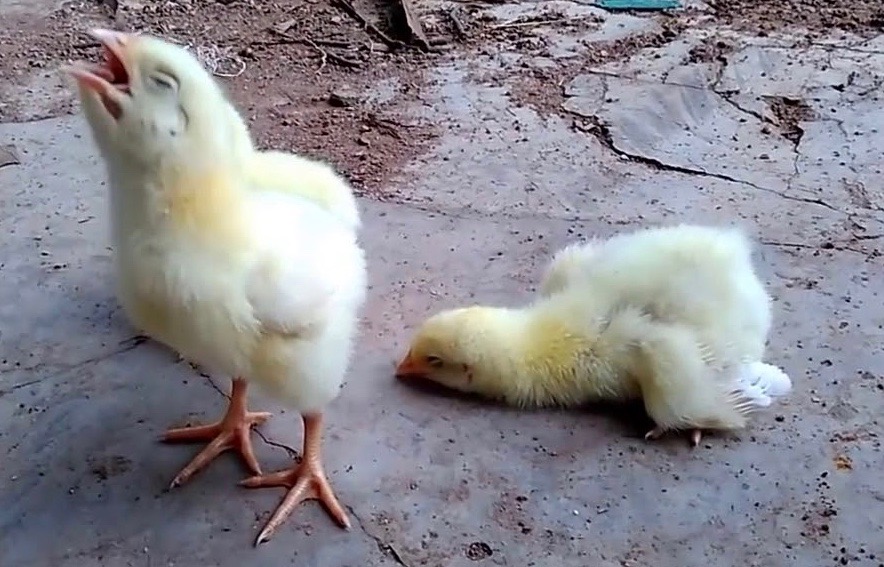
Aspergillosis is a fungal infection that can affect various bird species, including chickens. It is caused by the fungus Aspergillus spp., with Aspergillus fumigatus being one of the most common species involved. Aspergillosis primarily targets the respiratory system, particularly the lungs, and can lead to severe respiratory distress and other associated symptoms. Understanding Aspergillosis, its symptoms, causes, and potential treatments is crucial for poultry farmers and veterinarians. Here’s a comprehensive overview:
- Symptoms:
- Respiratory distress, including difficulty breathing, gasping, and wheezing.
- Coughing, often accompanied by a dry or mucus-like discharge.
- Nasal discharge and discharge from the eyes (conjunctivitis).
- Lethargy, weakness, and decreased activity.
- Decreased feed and water intake, resulting in weight loss and poor growth.
- Cyanosis (bluish discoloration) of the comb and wattles in severe cases.
- Open-mouthed breathing and head shaking.
- Causes:
- Aspergillosis is caused by inhalation of spores of Aspergillus fungi, which are commonly found in the environment, especially in damp or moldy conditions.
- Birds can inhale the fungal spores when exposed to contaminated bedding, feed, or poorly ventilated environments.
- Stress factors such as overcrowding, poor ventilation, and high humidity levels can increase the risk of Aspergillosis outbreaks.
- Diagnosis:
- Clinical signs and history of exposure to moldy environments are important for suspicion of Aspergillosis.
- Diagnostic tests may include radiographs (X-rays) to assess lung changes, fungal culture to identify the specific fungal species, and microscopic examination of respiratory secretions or tissues for fungal elements.
- Treatment and Control:
- Antifungal medications: Treatment of Aspergillosis typically involves antifungal medications such as itraconazole, voriconazole, or amphotericin B. These medications should be administered as per veterinary guidance and the recommended dosage regimen.
- Supportive care: Provide supportive care to infected birds, including optimal nutrition, hydration, and a stress-free environment. Improve ventilation and reduce humidity levels to discourage fungal growth.
- Environmental management: Implement measures to prevent mold growth in poultry housing, including proper ventilation, regular cleaning, and maintenance of dry bedding materials.
- Biosecurity: Limit exposure to moldy environments and contaminated feed or bedding. Practice good hygiene and sanitation practices to reduce the risk of Aspergillosis transmission.
Chronic Respiratory Disease (CRD):
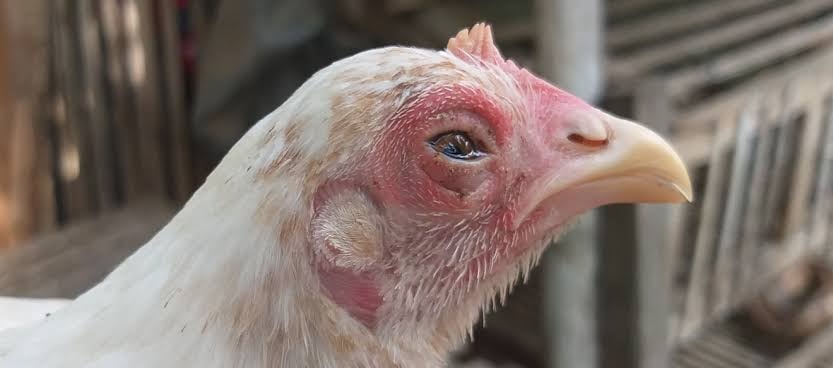
Chronic Respiratory Disease (CRD) is a common respiratory condition in poultry, especially chickens, characterized by persistent respiratory symptoms and decreased productivity. It is primarily caused by bacterial and viral infections, with Mycoplasma gallisepticum (MG) being one of the main pathogens associated with CRD. Other factors such as poor environmental conditions, stress, and concurrent infections can exacerbate the disease. Here’s a comprehensive overview of Chronic Respiratory Disease (CRD), including its symptoms, causes, and potential treatments:
- Symptoms:
- Persistent coughing and sneezing.
- Nasal discharge, often thick and purulent.
- Rales or rattling sounds during breathing.
- Swollen sinuses and facial swelling.
- Conjunctivitis (inflammation of the eye membranes) and eye discharge.
- Reduced feed and water intake, leading to weight loss and poor growth.
- Decreased egg production and poor egg quality.
- Lethargy, weakness, and decreased activity.
- Causes:
- Bacterial infections: Mycoplasma gallisepticum (MG) is a common cause of CRD in poultry. Other bacteria such as Escherichia coli, Pasteurella spp., and Avibacterium spp. can also contribute to respiratory disease.
- Viral infections: Viruses like Infectious Bronchitis Virus (IBV), Avian Influenza Virus (AIV), and Newcastle Disease Virus (NDV) can predispose birds to respiratory issues and exacerbate CRD.
- Environmental factors: Poor ventilation, high humidity, overcrowding, and inadequate sanitation can create favorable conditions for respiratory pathogens to thrive and cause CRD.
- Stress: Factors such as transportation, changes in temperature, and nutritional imbalances can weaken the immune system and increase susceptibility to respiratory infections.
- Diagnosis:
- Clinical signs and history of respiratory issues in the flock are crucial for suspicion of CRD.
- Laboratory tests, including bacterial culture, PCR (polymerase chain reaction), serological testing, and histopathology of respiratory tissues, can help identify the specific pathogens involved and assess the severity of the disease.
- Treatment and Control:
- Antibiotics: Treatment of CRD often involves antibiotics targeting the specific bacterial pathogens identified. Commonly used antibiotics include tetracyclines, macrolides, fluoroquinolones, and sulfonamides. Administer antibiotics as per veterinary guidance and the recommended dosage regimen.
- Supportive care: Provide supportive care to infected birds, including optimal nutrition, hydration, and a stress-free environment. Manage secondary bacterial infections and provide symptomatic relief as needed.
- Vaccination: Vaccination against key respiratory pathogens, such as Mycoplasma gallisepticum (MG) and Infectious Bronchitis Virus (IBV), can help prevent and control CRD outbreaks. Follow recommended vaccination protocols and consult with a veterinarian for guidance.
- Environmental management: Improve ventilation, reduce humidity levels, and maintain clean and dry housing conditions to minimize stress and limit the spread of respiratory pathogens.
- Biosecurity: Implement strict biosecurity measures to prevent the introduction and spread of respiratory diseases. This includes limiting visitor access, disinfecting equipment, and practicing good hygiene practices.
Newcastle Disease:
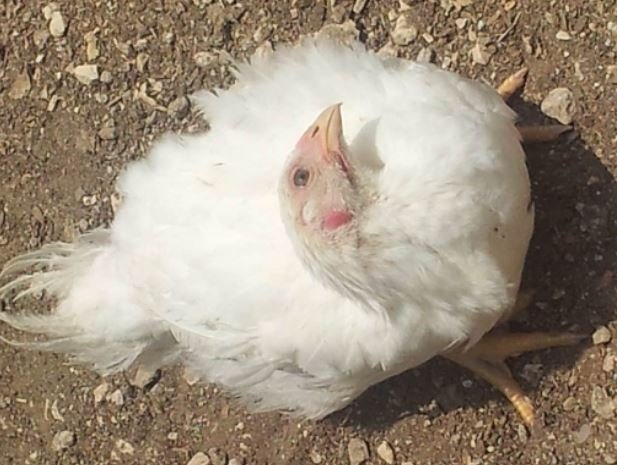
Newcastle Disease (ND) is a highly contagious viral infection that affects various bird species, including chickens, turkeys, pigeons, and wild birds. It is caused by the Newcastle Disease Virus (NDV), which belongs to the Paramyxovirus family. Newcastle Disease can result in severe respiratory, digestive, and neurological symptoms, leading to high mortality rates in susceptible bird populations. Here’s a comprehensive overview of Newcastle Disease, including its symptoms, causes, and potential treatments:
- Symptoms:
- Respiratory signs: Sneezing, coughing, gasping for air, nasal discharge, and wheezing.
- Digestive signs: Greenish diarrhea, reduced feed intake, and regurgitation.
- Neurological signs: Twisting of the neck (torticollis), paralysis, tremors, circling behavior, and depression.
- Swollen eyes, facial swelling, and purple discoloration of the comb and wattles.
- Sudden death, especially in severe cases.
- Causes:
- Newcastle Disease is caused by the Newcastle Disease Virus (NDV), which exists in multiple strains, including virulent (highly pathogenic) and avirulent (low pathogenic) forms.
- The virus spreads through direct contact with infected birds, respiratory secretions, feces, contaminated equipment, and airborne droplets.
- Wild birds, particularly waterfowl, can serve as reservoirs of NDV and contribute to its transmission to domestic poultry.
- Diagnosis:
- Clinical signs and history of exposure to NDV-infected birds or premises are crucial for suspicion of Newcastle Disease.
- Laboratory tests, including virus isolation, PCR (polymerase chain reaction), serological testing, and histopathology of affected tissues, are used to confirm NDV infection and differentiate between virulent and avirulent strains.
- Treatment and Control:
- There is no specific antiviral treatment for Newcastle Disease.
- Infected birds are typically culled to prevent the spread of the virus to other birds and reduce mortality rates.
- Supportive care: Provide supportive care to infected birds, including optimal nutrition, hydration, and a stress-free environment. Manage secondary bacterial infections and provide symptomatic relief as needed.
- Vaccination: Vaccination against Newcastle Disease is crucial for preventing outbreaks and reducing the severity of the disease. Different vaccines are available for virulent and avirulent strains, and vaccination protocols should be followed as per veterinarian recommendations and regional guidelines.
- Biosecurity: Implement strict biosecurity measures on poultry farms to prevent the introduction and spread of Newcastle Disease. This includes controlling visitor access, disinfecting equipment, and implementing hygiene protocols.
Fowl Cholera:
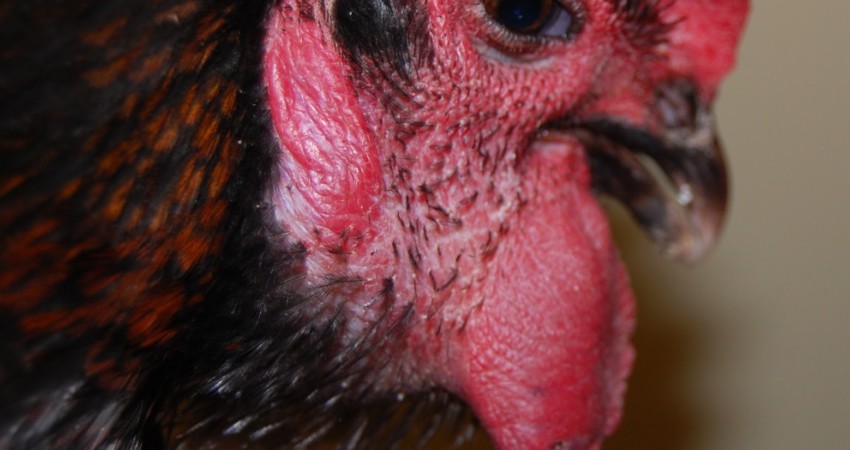
Fowl Cholera, also known as avian pasteurellosis, is a bacterial disease that affects various bird species, including chickens. It is caused by the bacterium Pasteurella multocida and can result in severe respiratory, digestive, and systemic symptoms. Fowl Cholera can lead to significant morbidity and mortality in poultry flocks, making it a serious concern for poultry producers. Here’s a comprehensive overview of Fowl Cholera, including its symptoms, causes, and potential treatments:
- Symptoms:
- Respiratory signs: Sneezing, coughing, nasal discharge, rattling breathing sounds, and respiratory distress.
- Digestive signs: Greenish diarrhea, reduced feed intake, and regurgitation.
- Swollen wattles, sinuses, and eyelids (periorbital swelling).
- Lethargy, weakness, and decreased activity.
- Sudden death, especially in acute and severe cases.
- Causes:
- Fowl Cholera is caused by the bacterium Pasteurella multocida, which exists in multiple strains with varying degrees of virulence.
- The bacteria can enter the bird’s body through inhalation, ingestion, or contact with contaminated materials, water, or surfaces.
- Stress factors such as overcrowding, poor ventilation, nutritional deficiencies, and concurrent infections can predispose birds to Fowl Cholera.
- Diagnosis:
- Clinical signs and history of exposure to Fowl Cholera outbreaks are important for suspicion of the disease.
- Laboratory tests, including bacterial culture, PCR (polymerase chain reaction), serological testing, and necropsy examinations, are used to confirm Pasteurella multocida infection and assess the severity of the disease.
- Treatment and Control:
- Antibiotics: Treatment of Fowl Cholera typically involves antibiotics targeting Pasteurella multocida, such as tetracyclines (e.g., oxytetracycline), fluoroquinolones, and sulfonamides. Administer antibiotics as per veterinary guidance and the recommended dosage regimen.
- Supportive care: Provide supportive care to infected birds, including optimal nutrition, hydration, and a stress-free environment. Manage secondary bacterial infections and provide symptomatic relief as needed.
- Vaccination: Vaccines are available for Fowl Cholera prevention in some regions. Consult with a veterinarian to determine the suitability and efficacy of vaccination for your flock.
- Biosecurity: Implement strict biosecurity measures on poultry farms to prevent the introduction and spread of Fowl Cholera. This includes controlling visitor access, disinfecting equipment, and practicing good hygiene practices.
- Test and cull: In severe outbreaks, test-and-cull programs may be implemented to identify and remove infected birds from the flock, reducing disease transmission and overall mortality.
Prevention Strategies for Healthy Flocks:
Preventing respiratory issues in chickens is crucial for maintaining flock health, productivity, and profitability. Respiratory diseases can lead to reduced egg production, poor growth rates, increased mortality, and economic losses. Implementing comprehensive preventive measures can significantly reduce the risk of respiratory issues in chickens. Here are key prevention strategies:
- Biosecurity Measures:
- Control access: Limit entry to poultry facilities to authorized personnel only. Implement visitor protocols, including footwear disinfection and protective clothing requirements.
- Quarantine new birds: Isolate new birds for a period before introducing them to the main flock. Monitor them for signs of respiratory illness and other health issues during quarantine.
- Wild bird control: Minimize contact between domestic poultry and wild birds, which can carry and transmit respiratory pathogens. Use netting or barriers to prevent wild bird access to poultry areas.
- Equipment sanitation: Regularly clean and disinfect equipment, tools, and vehicles to prevent the introduction and spread of pathogens.
- Optimal Housing Conditions:
- Ventilation: Ensure proper ventilation in poultry housing to maintain optimal air quality, reduce humidity levels, and prevent the buildup of respiratory irritants and pathogens.
- Temperature control: Maintain appropriate temperature levels according to bird age and environmental conditions to reduce stress and respiratory challenges.
- Bedding management: Use clean and dry bedding materials to prevent mold growth and minimize respiratory irritants.
- Housing design: Design poultry housing with adequate space, proper layout, and effective drainage to promote bird health and minimize disease risks.
- Nutrition and Water Quality:
- Balanced diet: Provide chickens with a balanced and nutritionally adequate diet to support immune function and overall health. Consult with a poultry nutritionist for tailored feeding programs.
- Clean water: Ensure access to clean and fresh water at all times. Regularly clean waterers and monitor water quality to prevent contamination and minimize disease transmission.
- Disease Monitoring and Surveillance:
- Regular checks: Conduct regular visual inspections of birds for any signs of respiratory distress, nasal discharge, eye abnormalities, or decreased activity.
- Record keeping: Maintain accurate records of flock health, mortality rates, and any observed respiratory issues. Document any changes in performance or behavior.
- Diagnostic testing: Work with a veterinarian to perform diagnostic testing, including bacterial culture, PCR (polymerase chain reaction), and serological testing, if respiratory issues are suspected.
- Vaccination and Health Management:
- Vaccination programs: Follow a comprehensive vaccination program tailored to the specific respiratory pathogens prevalent in your region. Vaccines for diseases like Infectious Bronchitis, Newcastle Disease, and Mycoplasma gallisepticum can help prevent respiratory issues.
- Health monitoring: Monitor flock health regularly, including vaccination status, disease history, and performance metrics. Implement preventive health measures based on veterinary recommendations.
- Training and Education:
- Staff training: Train farm personnel on proper biosecurity practices, disease recognition, and response protocols. Emphasize the importance of early detection and reporting of respiratory issues.
- Industry resources: Stay informed about industry best practices, guidelines, and resources for poultry health management and disease prevention. Collaborate with industry experts and organizations for ongoing support and education.
By implementing these preventive measures consistently and proactively, poultry producers can reduce the risk of respiratory issues in chickens, maintain flock health, and optimize production outcomes. Regular monitoring, effective biosecurity, vaccination, and proper management practices are key pillars of a successful respiratory disease prevention program.
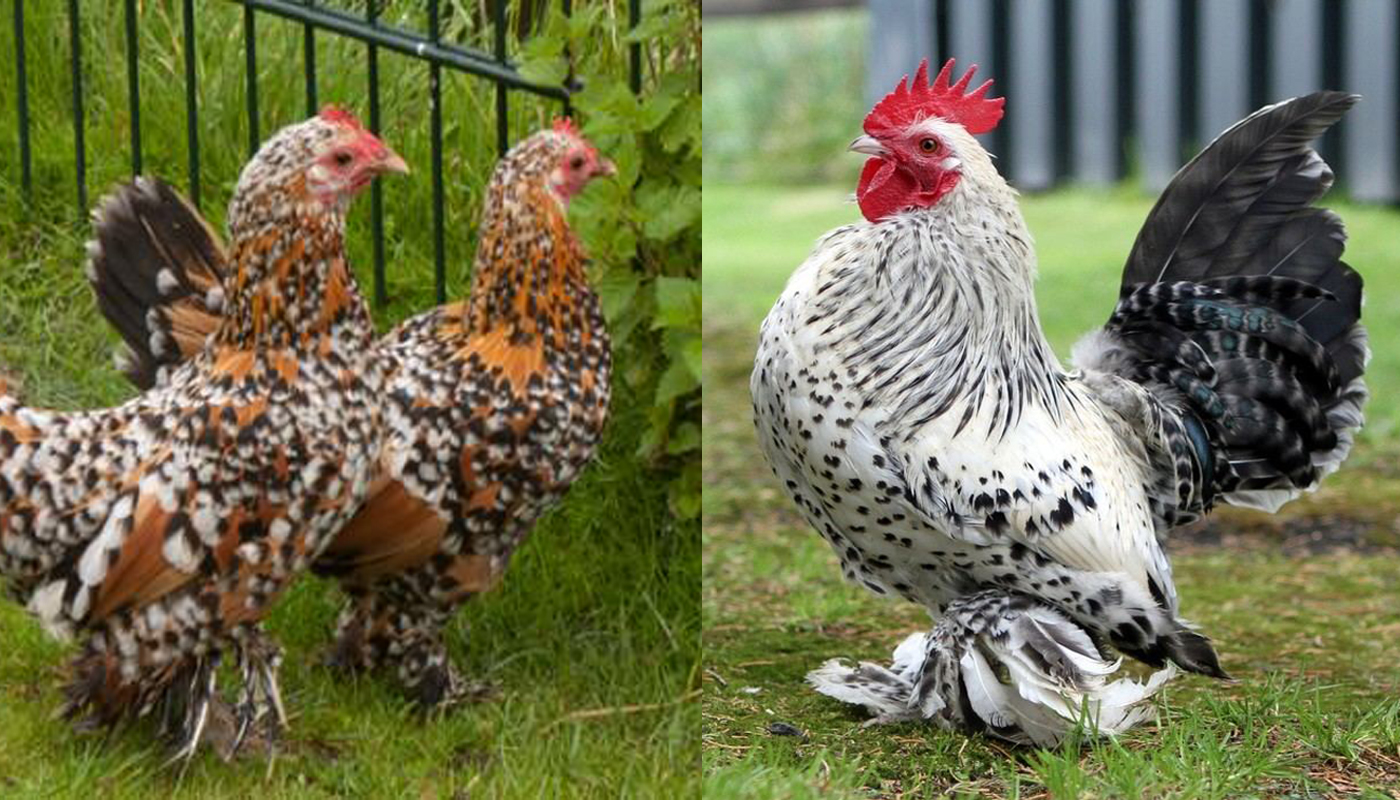 Booted Bantam Chicken Breed – Everything You Need to Know
Booted Bantam Chicken Breed – Everything You Need to Know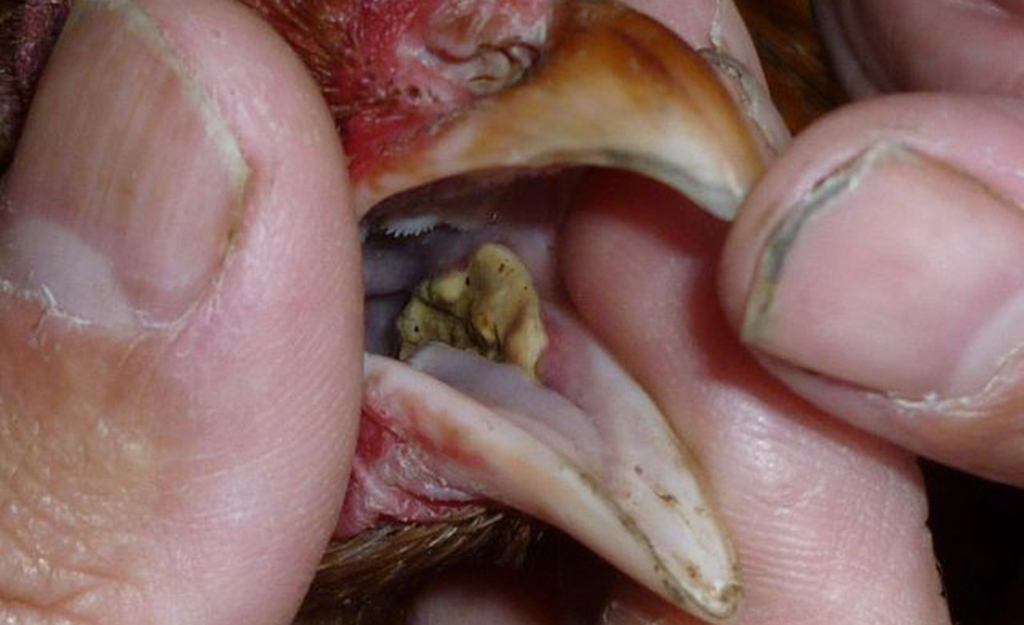 CONDITIONS THAT AFFECT THE DIGESTIVE SYSTEM OF CHICKENS
CONDITIONS THAT AFFECT THE DIGESTIVE SYSTEM OF CHICKENS Polish Chicken Breed – Everything You Need to Know
Polish Chicken Breed – Everything You Need to Know Understanding Chicken Stress: Causes and Solutions | Tips for Happy Flocks
Understanding Chicken Stress: Causes and Solutions | Tips for Happy Flocks CONDITIONS THAT AFFECT A CHICKENS SKIN
CONDITIONS THAT AFFECT A CHICKENS SKIN Ayam Cemani Chicken Breed – Everything You Need to Know
Ayam Cemani Chicken Breed – Everything You Need to Know Frizzle Chicken Breed – Everything You Need to Know
Frizzle Chicken Breed – Everything You Need to Know Feeding your Chickens
Feeding your Chickens COMMON CAUSES OF HEALTH ISSUES,SYMPTOMS AND PREVENTATIVE MEASURES
COMMON CAUSES OF HEALTH ISSUES,SYMPTOMS AND PREVENTATIVE MEASURES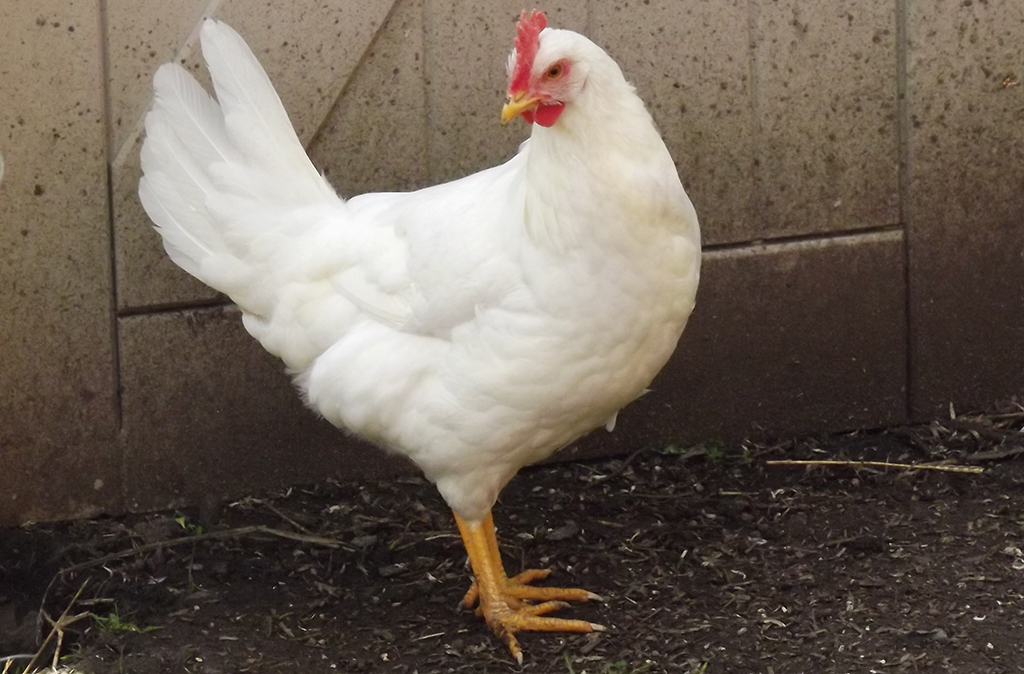 Top Chicken Breeds for Free Ranging
Top Chicken Breeds for Free Ranging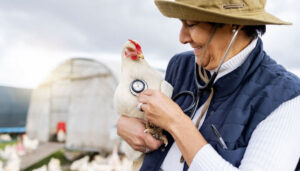 The Basics of Chicken Health: Understanding Common Ailments and Prevention Strategies
The Basics of Chicken Health: Understanding Common Ailments and Prevention Strategies Plymouth Rock Chicken Breed – Everything You Need to Know
Plymouth Rock Chicken Breed – Everything You Need to Know